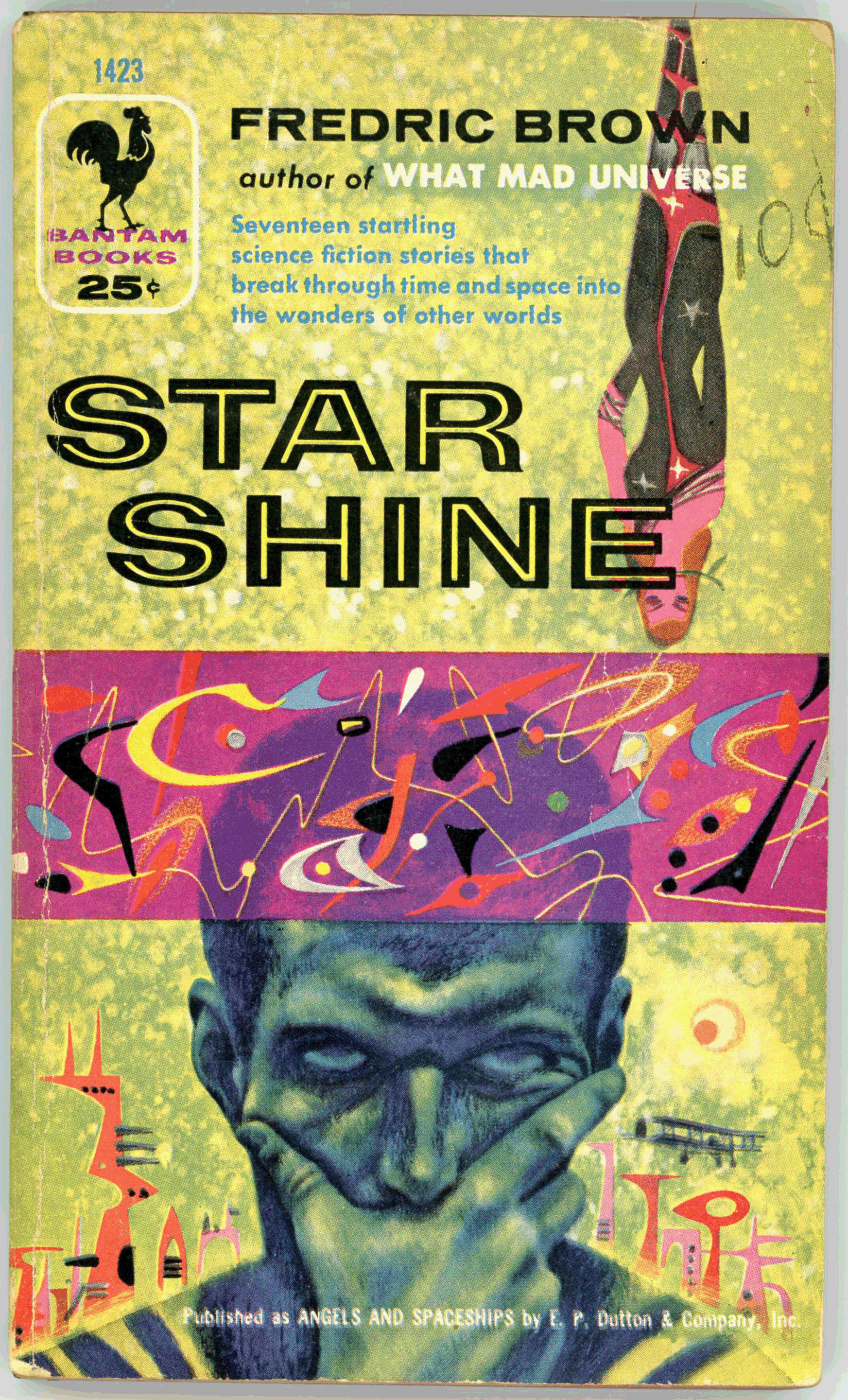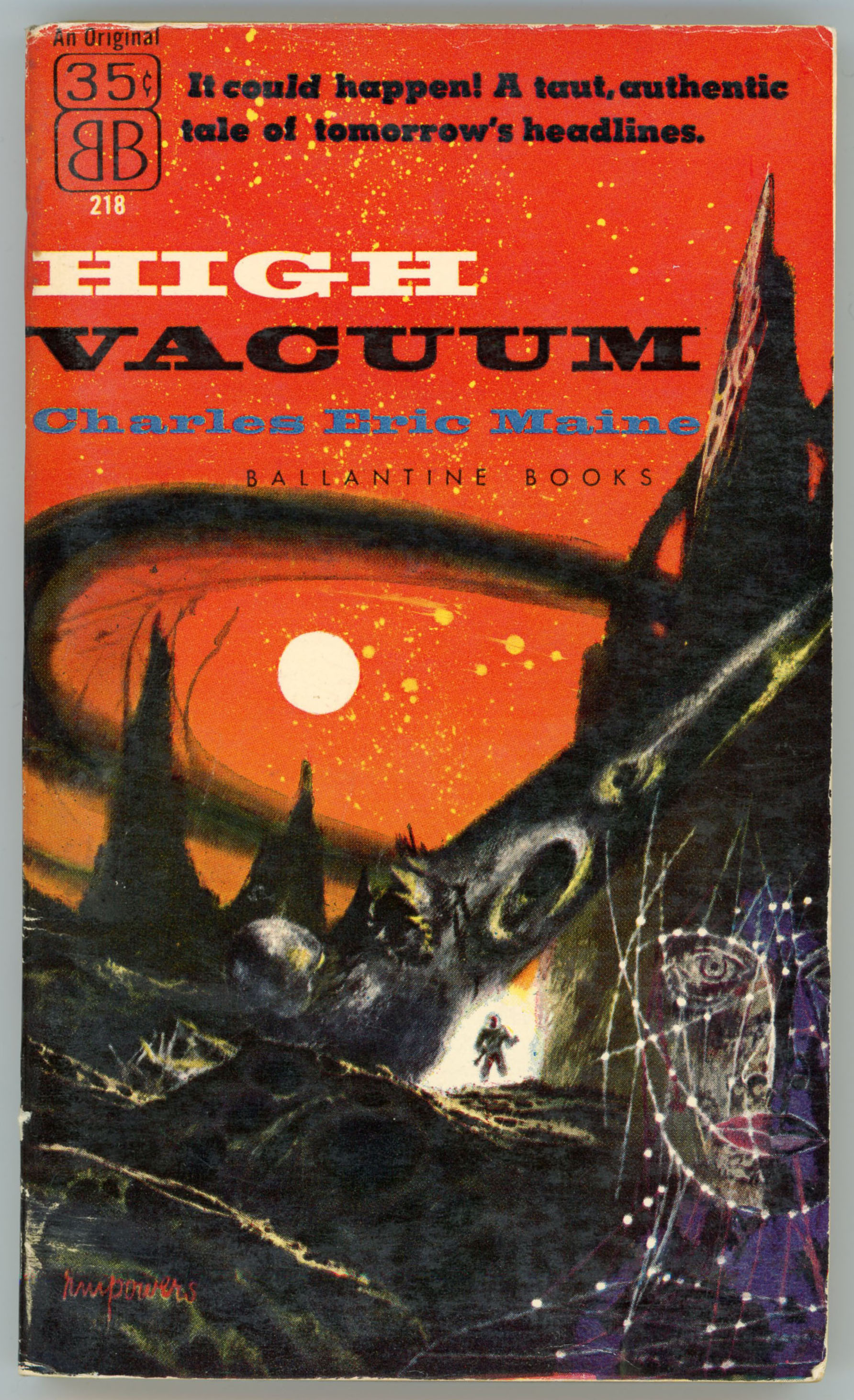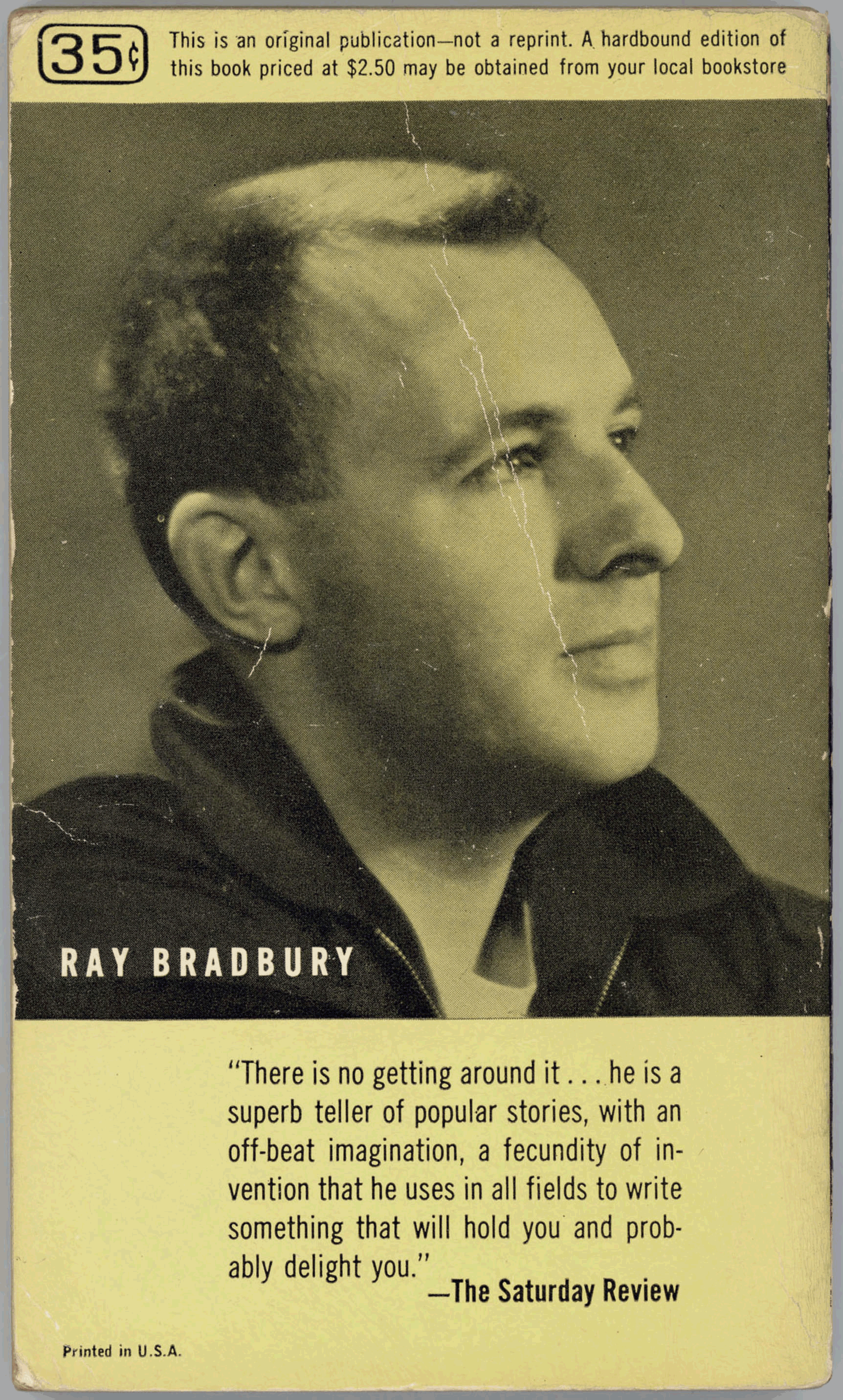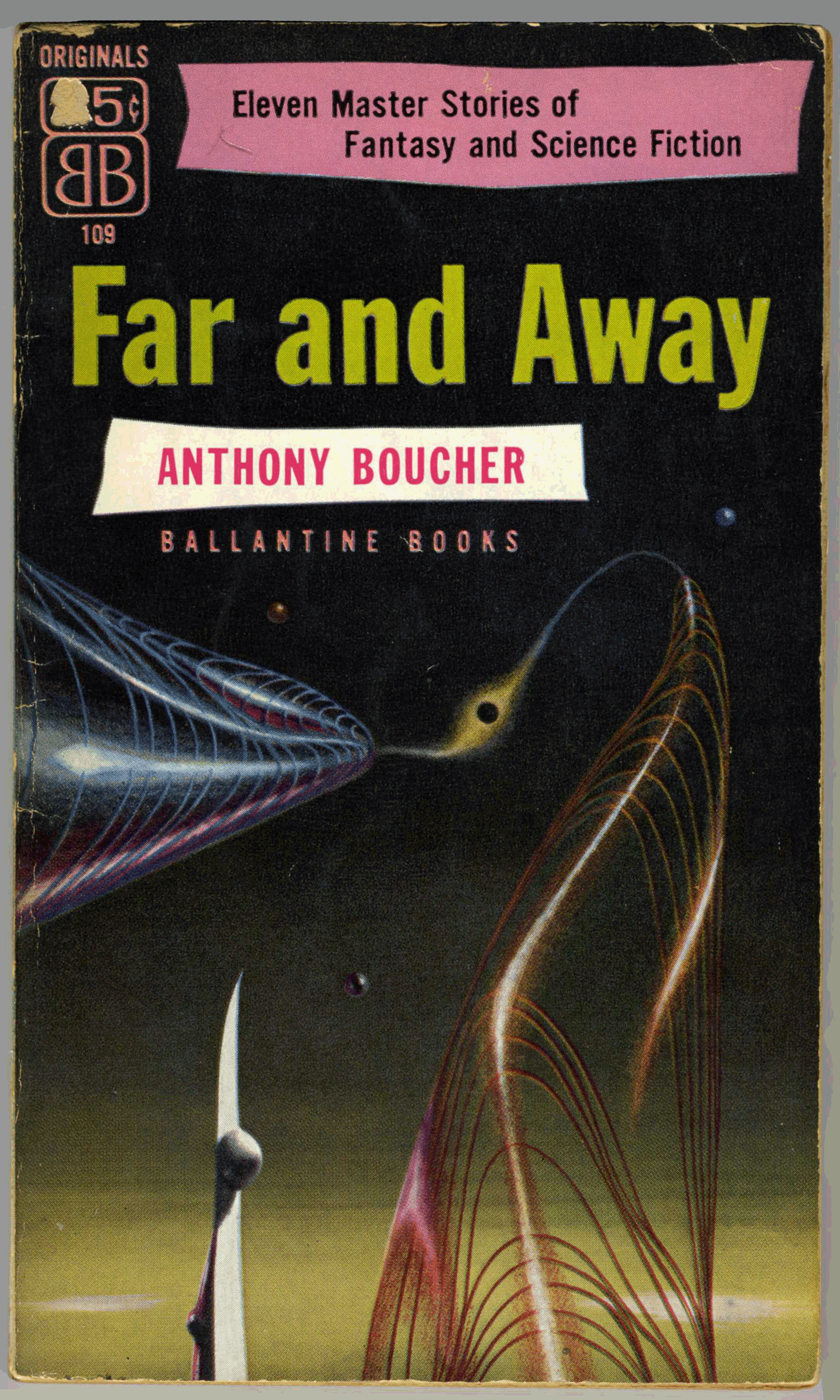Webster’s Ninth New Collegiate Dictionary (I’m reading this directly from the book!) defines “caviar” as 1) “processed salted roe of large fish (as sturgeon)”, and 2) “something considered too delicate or lofty for mass appreciation”.
Merriam-Webster OnLine’s definition of the term (I’m reading this directly off my screen!) includes the first two definitions as well as a third, the latter being, “something considered the best of its kind”.
And so, we come to Caviar, a 1955 anthology of stories by Theodore H. Sturgeon. It’s a humorous play on a word and more precisely on the man’s surname, but given the originality, power, and quality of Theodore Sturgeon’s writing, Webster’s latter two definitions are entirely appropriate. I can readily appreciate why Ballantine Books chose this very word as the title of this set of eight stories, which were published between 1941 and 1955.
Though I’ve not read much in the way of Sturgeon, what I have read uniformly has left me impressed (“Baby Is Three”), if not inspired, if not on occasion insightfully horrified (“And Now the News”), if not deeply moved (“A Saucer of Loneliness”). The last-mentioned tale, published in the February, 1953 issue Galaxy Science Fiction, ends with a remarkably inspiring line that I well remember even decades after reading the story:
“She said nothing, but it was as if a light came from her;
more light and far less shadow than ever the practiced moon could cast.
Among the many things it meant was
that even to loneliness there is an end,
for those who are lonely enough, long enough.”
And so, we come to Richard Power’s cover for Ballantine’s 1962 imprint of Sturgeon’s anthology. Typical of many of the artist’s paperback covers, the illustration has neither direct – nor indirect! – bearing upon or inspiration from any of the stories within the book. Rather, the ambiguity, abstractness, and calculated spontaneity (is there such a thing?!) of the painting engenders a feeling; creates a mood; reveals mysteries new to the human imagination; shows us energies, entities, and forces that entice us to venture into realms unknown.
Then again, even if the background is cast in muted tones of red, brown, and dark gray, it’s delightful in its own way, what with undulating streamers and waving bands in yellow, green, and red. With floating metallic ovals dangling; dancing in space. And even more.
So, the cover as a whole…
And, two closer views…

If you rotate this one ninety degrees to the left, it takes on the semblance of a human face…

…while this one, ostensibly simple, speaks of hidden power undulating through space.

And, the back cover, with plugs for Not Without Sorcery and Baby Is Three.
So, what’s in the book?
… via Internet Speculative Fiction Database …
“Bright Segment”, from this volume
“Microcosmic God”, from Astounding Science Fiction, April, 1941
“Ghost of a Chance”, from Suspense Magazine, Spring, 1951
(variant of The Green-Eyed Monster, from Unknown Worlds, June, 1943)
“Prodigy”, from Astounding Science Fiction, April, 1949
“Medusa”, from Astounding Science Fiction, February, 1942
“Blabbermouth”, From Amazing Stories, February, 1947
“Shadow, Shadow on the Wall”, from this volume
(variant of “Shadow, Shadow, on the Wall …”, from Imagination, February, 1951)
“Twink”, from Galaxy Science Fiction, August, 1955
Otherwise…
Theodore H. Sturgeon, at …































